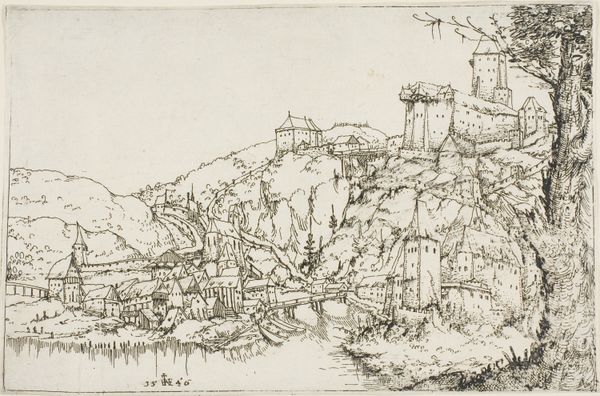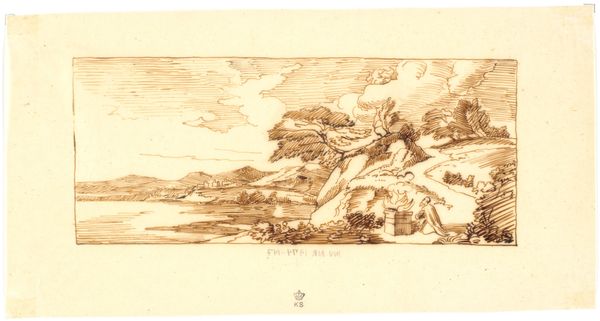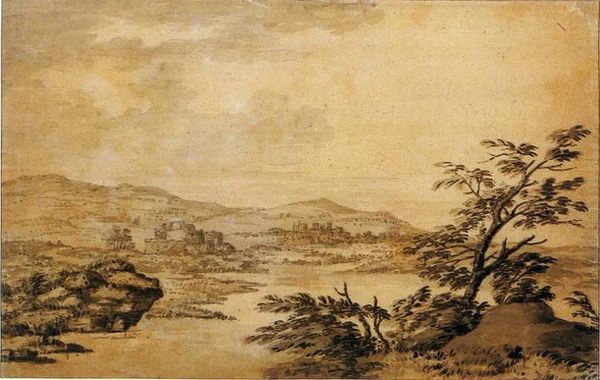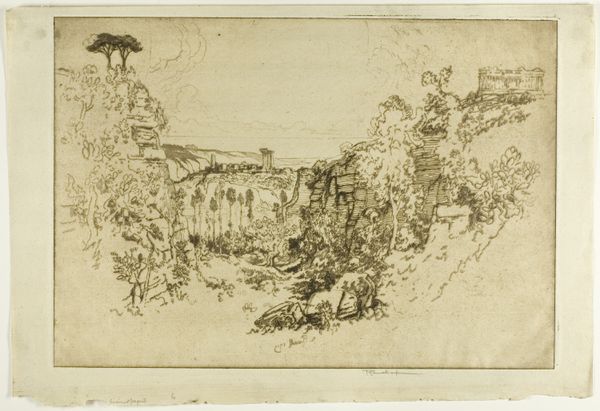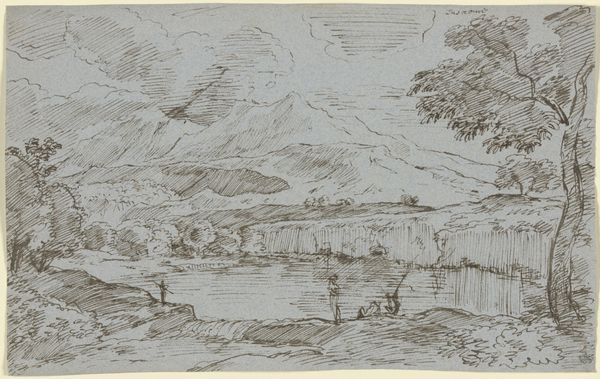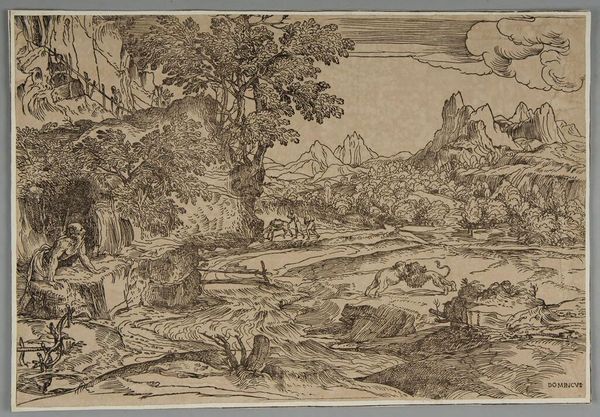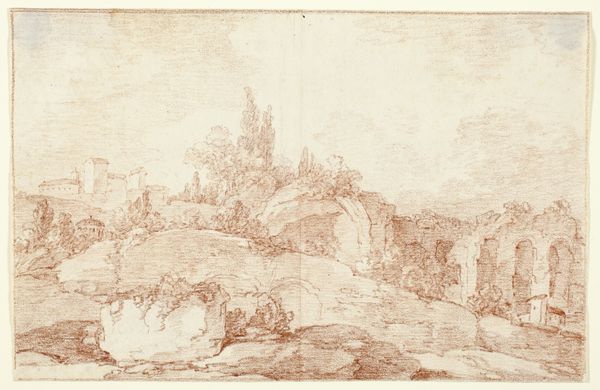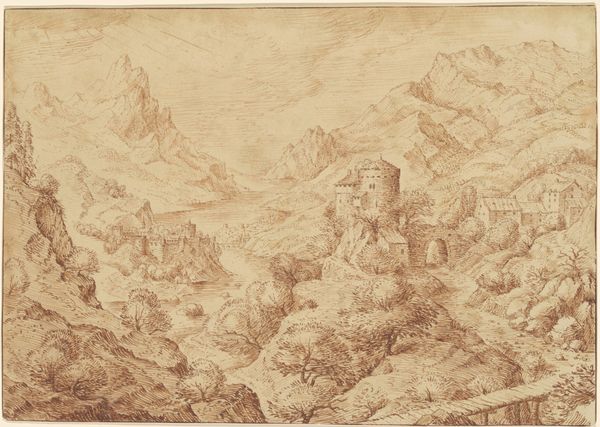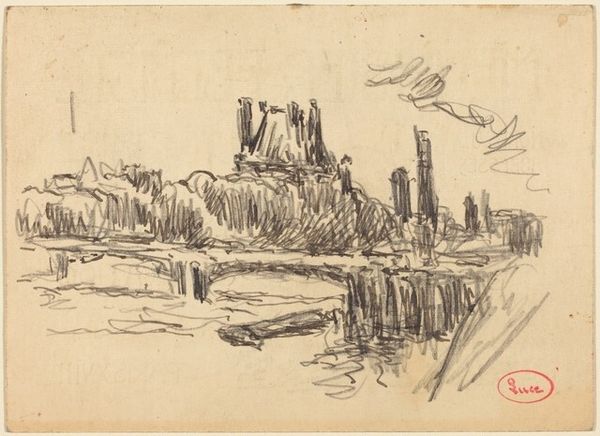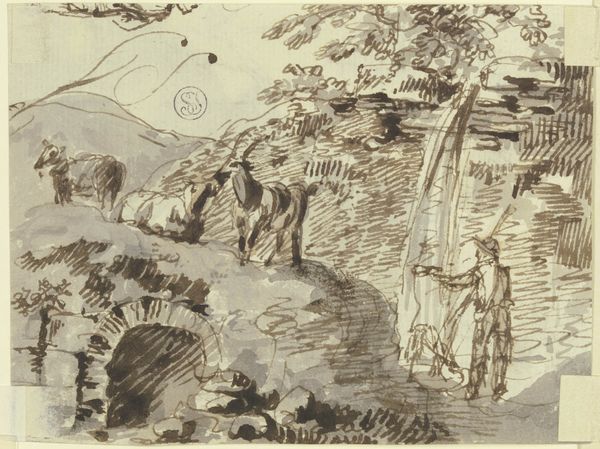
drawing, ink
#
drawing
#
landscape
#
perspective
#
ink
#
line
#
italian-renaissance
Dimensions: 19 x 28.5 cm
Copyright: Public domain
Editor: Here we have Leonardo da Vinci’s "Landscape drawing for Santa Maria della Neve" from 1473, created with ink. It's a beautiful landscape; the fine lines create so much depth and the perspective is stunning! How do you interpret this work in relation to the Italian Renaissance? Curator: This drawing, rendered with such incredible detail, invites us to consider the societal values embedded in Renaissance landscape art. We often discuss the rise of humanism and its focus on earthly beauty and scientific observation. How might this focus intersect with prevailing social hierarchies of the time? Editor: Well, I suppose the act of observing and documenting nature, and the skill required, would elevate the artist's status. Does the detailed landscape maybe reinforce a sense of human dominance over the natural world? Curator: Precisely. Think about land ownership and control, powerful patrons who commissioned art reflecting their dominion. Now, consider that Leonardo's detailed rendering suggests scientific study. In what ways did this new interest in the natural sciences reinforce or challenge existing beliefs about power and knowledge? Editor: It’s a good point. The detailed accuracy of the drawing probably implied a certain knowledge and control of the natural world that would appeal to powerful patrons of the time. That is an interesting interplay of science and art. Curator: Indeed. Also note, it coincides with increased colonial exploration – this detailed observation translates to potential exploitation. Is there an inherent political act occurring? A study in owning place, perhaps? Editor: That's not something I had thought of! I usually considered art from this period as reflecting beauty and a growing humanist view, but considering the context of power changes everything. Thanks! Curator: Absolutely. Recognizing these connections enables us to understand how artistic representation intertwines with social and political dynamics, revealing a much richer narrative.
Comments
No comments
Be the first to comment and join the conversation on the ultimate creative platform.
